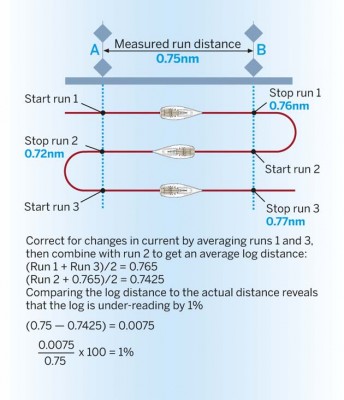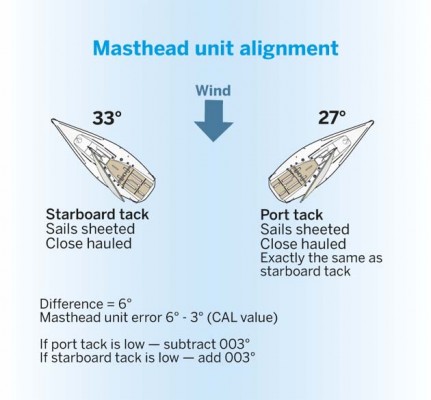Calibrating your instruments is crucial to be able to get the best out of your racing. Professional navigator and electronics expert Simon Fisher offers his tips for getting meaningful data
We are quick to believe the readouts from our instruments, but how can we be sure they are telling us the truth? Calibrating your system is crucial. Professional navigator and electronics expert Simon Fisher offers his tips for getting meaningful data:
1. Setting the basics
Make sure that the log and compass are well calibrated and the masthead wind sensor is centred. The calculations your instrument system carries out are based on the input from these key sensors. Only then can you expect the outputs to be good for the season.
When calibrating the log and the compass, pick a light wind day with flat water, steady conditions for a measured mile or a compass swing. To calibrate the wind instruments you want steady gradient wind conditions so that any asymmetry is caused by the alignment of your wind sensor and not factors such as a sea breeze.
2. Boat speed
There are typically two ways of calibrating your log. If you sail somewhere without tide or current it is usually as simple as changing the calibration number until the boat speed is equal to the speed over ground.

The other method is done by calculating the speed by motoring over a known distance. Most instrument systems will have this feature and by doing multiple runs at the same speed back and forth it allows you to calculate out any tidal influences.
3. True wind speed
Owing to the acceleration of the wind over the top of your spinnaker and mainsail, your TWS will typically read higher downwind than upwind. In steady conditions, by observing the wind speed just before the top mark and after you have hoisted, you can calculate the offset in wind speed. This number is always negative and can be put into your TWS calibration table.
Knowing what the wind strength will be for the upwind leg is clearly crucial if you are to make the right call for a headsail change or sail settings such as the genoa car positions.
4. Apparent wind
It is important to ensure that your masthead unit is symmetrical about the boat and there is no offset as a result of the installation or the sensor.

This can be calibrated in two ways; the easiest is to motor head to wind so your Windex is straight down the middle of the boat. The wind angle should read zero, if not then an offset needs to be applied to the instruments.
It can be tricky to hold your boat exactly head to wind so a more accurate way of doing this is to sail close-hauled on each tack on a day with steady wind, making sure your sails are trimmed the same on each tack.
By comparing the difference in wind angles you can calculate the offset by halving the difference between the two numbers observed.
5. True wind
Calibrations for true wind direction (TWD) and angle (TWA) are available on the higher-level instrument systems. True wind tables normally have columns for upwind, reaching and downwind.

TWD and angle are calibrated by sailing the same wind angle on both tacks in a steady breeze and comparing the differences observed in the true wind direction. If your TWD suggests you are a lifted on both tacks then your TWA reading is too wide and a negative number should be entered into the calibration table.
Conversely, if you seem to be headed from one tack to another your TWA is reading too narrow and a positive number needs to be entered.
Errors in TWD while racing can lead you into thinking you are getting every shift right, or wrong.
Simon Fisher is a professional navigator and a director of Diverse Yacht Systems in Hamble. A veteran of three Volvo Ocean Races and two America’s Cup campaigns. He also has several Sydney-Hobart races under his belt




